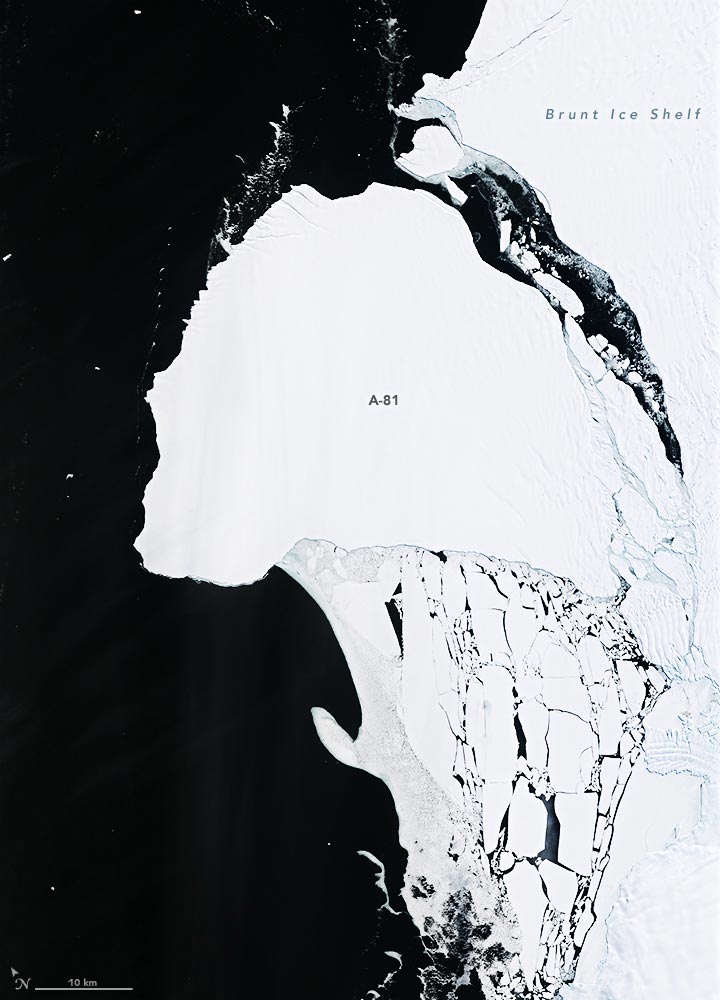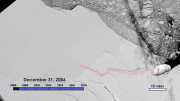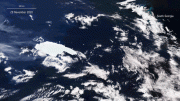After breaking from the Brunt Ice Shelf, Iceberg A-81 and other pieces of ice drift south with the Weddell Gyre.
On January 22, 2023, the British Antarctic Survey reported that a new iceberg had broken from Antarctica’s Brunt Ice Shelf. In the days following the long-awaited break, satellites have captured several new images of the behemoth berg as it drifts south.
Two days after the iceberg first broke off, NASA’s Terra satellite acquired a wide view of the region, which analysts at the U.S. National Ice Center (USNIC) used to confirm the break. Later, on January 25, 2023, the Operational Land Imager (OLI) on Landsat 8 acquired these detailed views.
The first image shows the iceberg drifting in the Weddell Sea. The berg, which USNIC named Iceberg A-81, measured about 1550 square kilometers (600 square miles)—about twice the area covered by New York City. The main berg is surrounded by smaller icebergs, sea ice, and a composite mix of ice types covered in snow called mélange.
The second image, also acquired January 25 with OLI on Landsat 8, shows a detailed view of the smaller keystone-shaped iceberg between A-81 and the new front of the Brunt Ice Shelf. This is the part of the shelf where a rift, which has been growing in spurts since at least the 1970s, finally spanned the entire shelf and broke the floating glacial ice apart. In the rift’s final advance, it reached a complex part of the ice shelf and bifurcated, cutting out the keystone-shaped iceberg. It measures just several kilometers—tiny compared to A-81, which measures 52 kilometers on its longest axis.
According to Christopher Shuman, a University of Maryland, Baltimore County, glaciologist based at NASA’s Goddard Space Flight Center, satellite images indicate that the front of the Brunt Ice Shelf is now more than 20 kilometers back from its position in early 1973. The British Antarctic Survey’s (BAS) Halley Research Station, which was relocated farther inland in 2016, is now about 15 kilometers from the new front of the ice shelf. BAS reported that the station was unaffected by the recent break.
At the time of these images, Iceberg A-81 and other pieces of ice were drifting southward with the clockwise motion of the Weddell Gyre, although it remains to be seen where they will go from here. A previous berg that broke from the ice shelf in February 2021 (Iceberg A-74) followed the gyre. Its pieces now drift more than 500 kilometers away from Brunt near the Ronne-Filchner Ice Shelf.
NASA Earth Observatory images by Lauren Dauphin, using Landsat data from the U.S. Geological Survey. Caption by Kathryn Hansen with image interpretation from Christopher Shuman (NASA/UMBC).











Big ice cube!!!!!